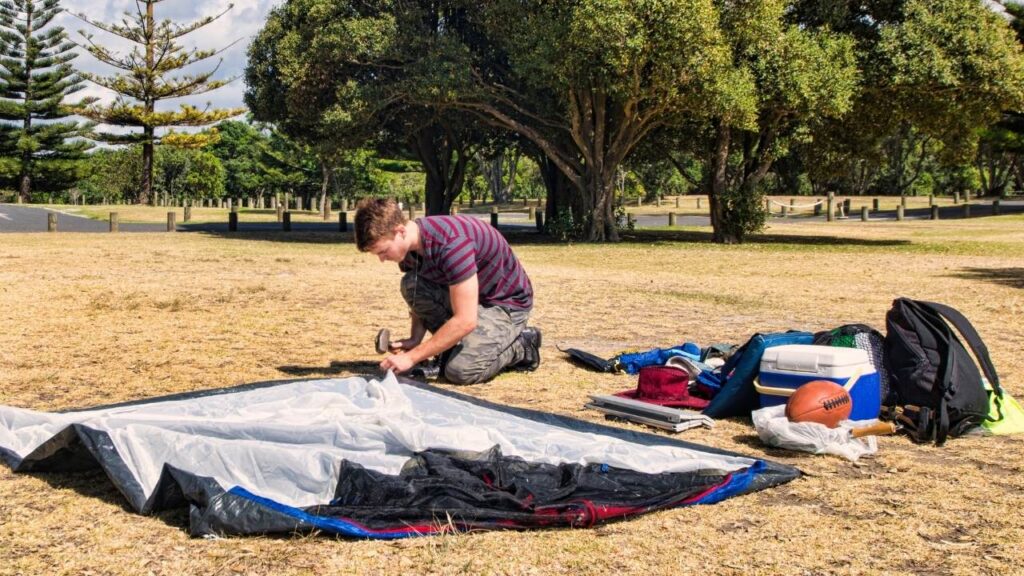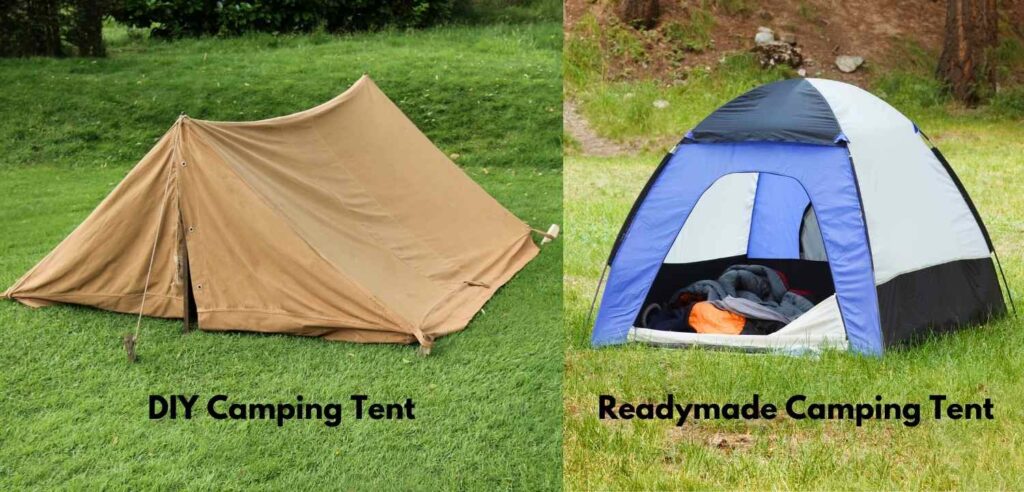While thinking about camping, you also need to think of taking a tent with you to the campsite. Otherwise, it would be impossible for you to stay overnight. Most people can’t think of camping without taking a tent with them. If you do not have a camping tent then you can easily make a DIY tent yourself. Making a tent out of scratch can definitely be a memorable experience. Most of the materials you need to make a DIY tent can be found in nature.
However, if you want to make it durable and reliable, you have to buy 1 or 2 extra materials like fabric and rope from the market and take them with you to the campsite. These materials come at a very affordable price. So let’s find out what materials are needed to make a DIY tent.
What Materials Do You Need?
The most important aspect of a perfect camping tent is – the material. The materials should be durable enough to ensure proper safety in challenging weather. A perfect camping tent consists of three major facets – a rainfly, a footprint/tarp, and the body. These are fabric materials that need to be waterproof. Along with these, we need some other essential materials to build a DIY tent. All of these components are explained below.

Rainfly
Rain flies are mainly used for keeping your tent safe from heavy rainfall. It’s a wind and waterproof piece of fabric that works as an additional layer of protection to your tent. A rainfly is the outermost part of your camping tent that needs to be pitched tightly to the ground.
Footprint
A tarp acts as the tent’s floor to keep the tent safe from sharp particles. It also adds an insulating layer that provides comfort while staying inside. Additionally, it keeps your tent clean from dust & mud, so you don’t have to worry about washing your tent frequently.
Tent Body
The tent body is the main part of a tent that gives you accommodation while camping. It’s also made from waterproof fabric like nylon and polyester. There are a wide variety of tents available like – three-season tents, mountaineering tents, freestanding and non-freestanding tents, etc and all of them need the same type of fabric to be set up. It’s mainly set over the tarp which acts as the foundation of your tent.
Poles
Poles hold the structure of your tent. It’s like the backbone of a tent and that’s why it should be durable enough to deliver maximum stability. That’s why it’s ideal to pick aluminum alloys as tent poles. They are water and rust-resistant.
Also, they are strong and lightweight. Yes, there are other metals that you can choose from but they don’t possess all these qualities. You can bring aluminum poles to the campsite but as we are making a DIY tent, we will be using a tree limb as a tent pole. Tree limbs are easier to find in nature, so you don’t have to buy a pole separately.
Guy Ropes
These are connecting cords to anchor the entire tent to the pegs. These ropes add stability to the tent. They hold the tent close to the ground and provide safeguards from being blown away by strong winds. It’s wise to use synthetic or nylon guy ropes because other types of ropes can wear out easily.
Pegs
Pegs are the anchor bolts that need to be set in the ground to hold the outer liners of the tent and guy lines. These are made from aluminum or titanium. They come in different shapes to get a better grip on different kinds of soil. You can also use wooden stakes as pegs. Pegs can be 150mm to 490mm long with a thickness of around 1.6mm to 3.2mm.
Among all these, you only need to buy the fabric and the rope. You can easily find them at your local hardware stores for relatively affordable prices. Try to get a big piece of fabric you can cut that into three small sizes to use as a rain fly, tent body cloth, and tarp.
How To Make A DIY Camping Tent?
Before we jump into the step-by-step guide, we need to find a spot for camping. It’s wise to build camping tents near trees because you’ll get natural shade. Select a living tree to set up your tent because a dead tree with frail branches is prone to breaking and falling. So, they can be dangerous during a storm while living trees will keep you safe. Also, find even ground because sleeping on top of uneven ground is very uncomfortable.

Tarp Preparing
To build a DIY tent, we will start by preparing the tarp. First, take the tarp and lay it on a plain surface. Then give it a bathtub shape that will prevent water from seeping into it. Next, make holes at the 4 corners of the tarp. You need to tie the guy ropes to these corners to keep it stable on the ground.
Rope Attachments
Now, take the ropes and connect them to the tarp by making a knot with the holes you made previously. Then, stretch it fully to make the tarp level and tie the rope ends with the pegs. You need to hammer the pegs into the ground. If you don’t have a hammer, you can also try using rocks instead.
Setting Up Tent Body
Then, take the body fabric and place it over the tarp. Now, put the pole vertically in front of the tarp. For the pole, you can use a 3 to 5 feet long tree limb. Make sure that the tree limb is straight and the small branches attached to it should be cut clean with a knife. Then take the tent body fabric and place it over the pole so that the tent will form a shape like an “A”. Tie the corners of the body fabric to the pegs with guy ropes to secure the tent to the ground.
Use Rainfly
Lastly, if there is a possibility of rain then you should add a shade of waterproof fabric on the front of the tent. This will prevent rainwater from entering inside. If you are camping in the rainy season, only then a rainfly is needed. Otherwise, it’s not a necessity.
DIY Vs Readymade Camping Tents

Tents purchased from markets come in a fixed size so you can’t extend them if needed. But your DIY tents are flexible, so you can make them bigger or smaller as per your need. Ready-made tents can withstand almost all weather conditions. But since the DIY tents are made by you with locally available materials, they can’t offer the same kind of durability compared to professionally built tents.
However, DIY tents are less expensive than ready-made tents. On the other hand, ready-made tents offer better design whereas DIY tents look very average. It’s obvious because as you’re spending money, you can expect a product with a better look. If you consider these aspects, both DIY and ready-made tents have their own advantages and disadvantages.
Why You Should Make A DIY Camping Tent?
The most obvious reason is – it will save you a lot of money. Commercially made tents leave dents in your pocket, so once you build one, you no longer have to rely on expensive tents. Building a tent from scratch will boost your confidence and teach you valuable camping skills. Undoubtedly, you want to make a tent that is completely reliable and this quality will come in very handy when surviving in nature.
DIY tents are lightweight as you have the freedom of picking the materials on your own. These materials aren’t hard to find and you can easily make one by yourself. Mastering the art of making a DIY tent will make you invincible. Once you build a DIY tent of your own, you will never have to buy a commercial tent.

William Arrovo seeks thrills and laughter in everything he comes across. He is a fun loving person with a zest of exploring the breathtaking places around the globe. He feels content in sharing his experiences of travelling to various countries. He is grateful about enriching himself with a myriad of cultures and rejuvenating his soul while staying outdoors.









Leave a Comment